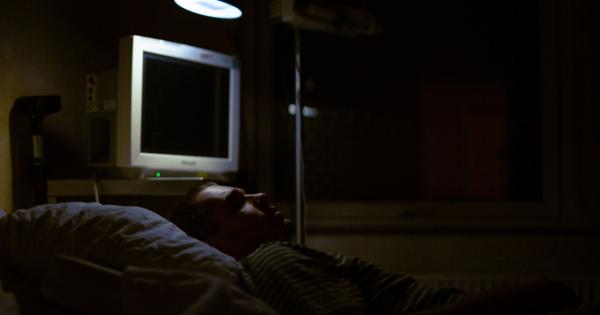Blindness is a debilitating condition that affects millions of people worldwide. It robs individuals of their ability to see and experience the world around them.
However, recent groundbreaking research has resulted in the development of a revolutionary medicine that has the potential to change the lives of blind people. This innovative medication enables individuals with visual impairments to perceive light patterns, offering new hope for those without vision.
Understanding Visual Impairments
To comprehend the significance of this breakthrough medicine, it is essential to understand the nature of visual impairments.
Blindness can be caused by various factors, such as damage to the optic nerves, genetic disorders, or degenerative conditions affecting the retina.
The retina, located at the back of the eye, is responsible for converting light into electrical signals that can be interpreted by the brain.
In people with visual impairments, the retina fails to function properly, preventing the transmission of visual information to the brain.
Decoding the Science Behind the Medicine
The newly developed medicine works by stimulating the damaged retina to perceive light patterns.
The breakthrough lies in a special molecular compound that mimics the action of the natural chemicals responsible for signal transmission in a healthy retina.
When administered to a patient, this medicine interacts with the damaged retinal cells, boosting their ability to respond to light stimulus.
By enhancing the transmission of electrical signals from the retina to the brain, blind individuals can now experience visual sensations in the form of light patterns.
The Impact on Visual Rehabilitation
This groundbreaking medicine has opened up exciting possibilities for visual rehabilitation in blind individuals. Previously, rehabilitation techniques focused on alternative senses, such as touch and hearing, to compensate for the lack of vision.
While these techniques are still valuable, the ability to perceive light patterns introduces a whole new dimension to visual rehabilitation.
Visual rehabilitation programs can now incorporate light stimuli as a means of training the brain to process visual information.
By exposing blind individuals to varying light patterns, specialized therapies can help stimulate the brain’s visual cortex and improve its ability to interpret visual stimuli.
Moreover, the ability to perceive light patterns provides blind people with a greater sense of independence and the potential to interact more effectively with their environment.
Simple tasks, such as avoiding obstacles or recognizing facial expressions, become more manageable with the newfound ability to perceive light.
Promising Results from Clinical Trials
Initial clinical trials involving the newly developed medicine have shown promising results. Patients who previously had no visual perception were able to identify and differentiate between various light patterns.
One such trial participant, Sarah Johnson, shared her experience, “I can’t put into words how incredible it feels to see light patterns after living in complete darkness for years.
It’s like a whole new world has opened up before my eyes.”.
The success of these clinical trials has paved the way for further research and development in the field of visual rehabilitation.
Scientists are now exploring ways to refine the medication and extend its applications to other types of visual impairments.
Potential Future Developments
The newly developed medicine holds immense potential for future improvements and developments in the field of visual rehabilitation.
Researchers are optimistic about expanding the range and quality of visual perceptions that blind individuals can experience.
Scientists are also exploring the possibility of combining the medication with advanced visual prosthetic devices.
These devices can work in conjunction with the medicine to enhance visual perception further, potentially giving individuals with visual impairments the ability to see more detailed images or even regain partial sight.
Overcoming Challenges and Ethical Considerations
While this breakthrough medicine offers tremendous hope, it also raises important ethical considerations. Ensuring widespread accessibility and affordability of the medication is crucial to maximize its impact on those in need.
Additionally, further research is needed to evaluate any potential side effects or long-term implications of the medicine.
Scientists and medical professionals are closely monitoring patients who have participated in clinical trials to assess their overall well-being and any potential drawbacks.
Conclusion
The newly developed medicine that enables blind people to perceive light patterns represents a significant milestone in the field of visual rehabilitation.
This breakthrough offers hope for the millions of individuals who suffer from visual impairments, providing them with the ability to experience visual sensations and navigate the world with increased independence.
Through continued research and development, it is expected that this groundbreaking medicine will continue to advance, ultimately transforming the lives of blind people worldwide and opening up possibilities for enhanced visual perception and rehabilitation.





























